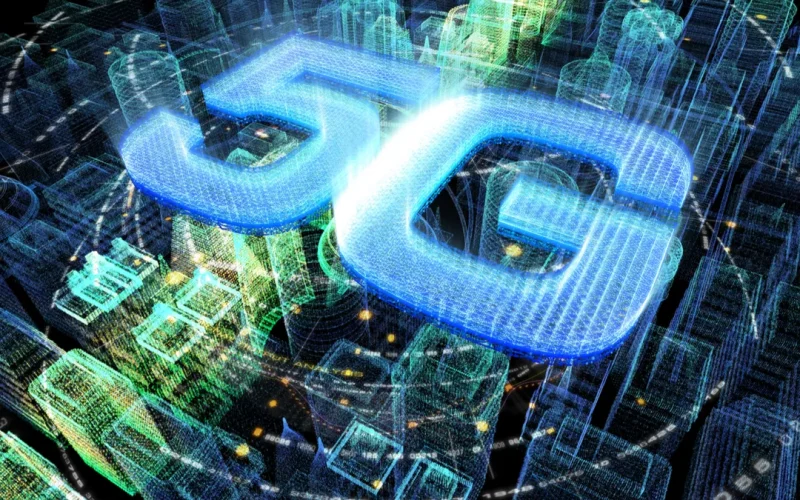Introduction
The world’s digital landscape is undergoing a seismic shift thanks to 5G connectivity, the fifth generation of mobile networks. Promising blazing-fast downloads, minimal delay, and the capacity to connect billions of devices, the 5G revolution is more than just a faster internet on your phone. It lays the groundwork for innovations in healthcare, manufacturing, transportation, and smart cities. In this article, we’ll dive into how high-speed networks powered by 5G are transforming our lives, the challenges ahead, and what the future holds for businesses and consumers alike.
The Rise of 5G
Mobile networks have evolved steadily: from 1G analog voice calls to today’s 4G LTE that brought video streaming and mobile gaming. Yet demand for bandwidth continues to skyrocket. Enter 5G. Unlike its predecessors, 5G uses a mix of low-, mid-, and high-frequency spectrum bands. These bands enable both long-range coverage and ultra-fast speeds over short distances. Network providers worldwide have launched 5G services in major cities, and coverage is expanding rapidly. As infrastructure grows, more people and devices will tap into the power of 5G connectivity.
Enhanced Speed and Capacity
One of the most notable perks of 5G is its speed. While 4G LTE tops out around 100 megabits per second (Mbps) in real-world use, 5G regularly delivers 1–3 gigabits per second (Gbps) under ideal conditions. That means downloading a 2-hour HD movie in seconds rather than minutes. But speed is only half the story. 5G networks can handle up to 1 million devices per square kilometer—ten times the density of 4G. This boost in capacity keeps networks from slowing down, even at packed events like concerts or sports games.
Ultra-Low Latency Applications
Beyond raw speed, 5G slashes latency—the time it takes for data to travel from device to server and back. Typical 4G latency sits around 50 milliseconds; 5G targets as low as 1 millisecond. This near-instant response opens the door to applications that demand real-time feedback:
- Autonomous vehicles: Cars can communicate with each other and traffic systems in real time to avoid collisions.
- Remote surgery: Surgeons can control robotic tools from miles away with precision and no lag.
- Cloud gaming: Players experience console-quality games streamed from the cloud with no perceptible delay.
These use cases illustrate how the 5G revolution moves beyond faster downloads into life-changing services.
Connecting the Internet of Things
The rise of the Internet of Things (IoT) hinges on reliable, scalable connections. Today’s 4G networks strain under the sheer volume of sensors, cameras, and smart devices. High-speed networks powered by 5G can support massive IoT deployments:
- Smart homes: Appliances adjust energy use based on real-time data.
- Industrial automation: Factories use robotic arms and sensors to fine-tune production lines.
- Environmental monitoring: Sensors track air quality, noise levels, and water usage across cities.
With 5G, these devices can communicate seamlessly, powering smarter, more efficient systems.
Transforming Industries
The impact of 5G stretches across every major industry:
- Healthcare: Telemedicine and remote patient monitoring become more reliable, improving access to care in rural areas.
- Manufacturing: Factories adopt “Industry 4.0” practices, using connected machines and AI to boost productivity and reduce downtime.
- Transportation: Real-time data on traffic, weather, and vehicle health leads to safer, more efficient travel.
- Entertainment: Augmented and virtual reality experiences become smoother and more immersive for consumers.
As businesses integrate 5G, they unlock new revenue streams and operational efficiencies.
Smart Cities and Public Services
Cities worldwide are investing in 5G to build smarter urban environments. By deploying connected streetlights, traffic signals, and public safety cameras, city planners can:
- Reduce congestion: Dynamic traffic lights adapt to real-time flow.
- Improve safety: Emergency responders receive live video feeds and location updates.
- Enhance services: Waste collection routes and public transportation schedules optimize based on accurate data.
These projects demonstrate how 5G connectivity extends beyond individual gadgets to entire communities.
Challenges in 5G Deployment
While the promise of 5G is vast, hurdles remain:
- Infrastructure Costs: Building new cell towers and small-cell networks requires significant investment.
- Spectrum Allocation: Governments must auction off usable frequency bands, a process that can be slow and costly.
- Device Compatibility: Consumers need 5G-capable smartphones and devices, which can be more expensive initially.
- Security Concerns: The expanded attack surface of IoT devices heightens the need for robust cybersecurity.
- Coverage Gaps: Rural or remote areas may lag behind urban centers in 5G rollout.
Addressing these challenges demands collaboration among carriers, regulators, and equipment manufacturers.
The Road Ahead
5G is an ongoing journey, not a fixed destination. Future advancements include:
- Standalone 5G Networks: Moving away from 4G cores to fully 5G network architectures will unlock even better performance.
- Integration with Edge Computing: Processing data closer to the source reduces latency and eases core network loads.
- Network Slicing: Carriers can partition their networks into virtual “slices” tailored for specific use cases, like emergency services or gaming.
- 6G Research: Early work on the sixth generation aims for even faster speeds, broader coverage, and stronger AI integration by the 2030s.
By staying at the cutting edge, businesses and consumers will continue to reap the rewards of high-speed networks.
Conclusion
The 5G revolution is more than an upgrade to faster mobile data. It promises to reshape how we live, work, and play, fueled by unprecedented speeds, ultra-low latency, and massive device connectivity. From 5G connectivity that downloads entire movies in seconds to high-speed networks powering smart cities and remote surgeries, the next wave of digital innovation is here. While deployment challenges persist, the benefits for industries, governments, and everyday users are clear. As carriers expand coverage and new technologies emerge, 5G will unlock experiences we can only begin to imagine. Embrace the revolution—because the future of connectivity is wireless, instant, and limitless.










